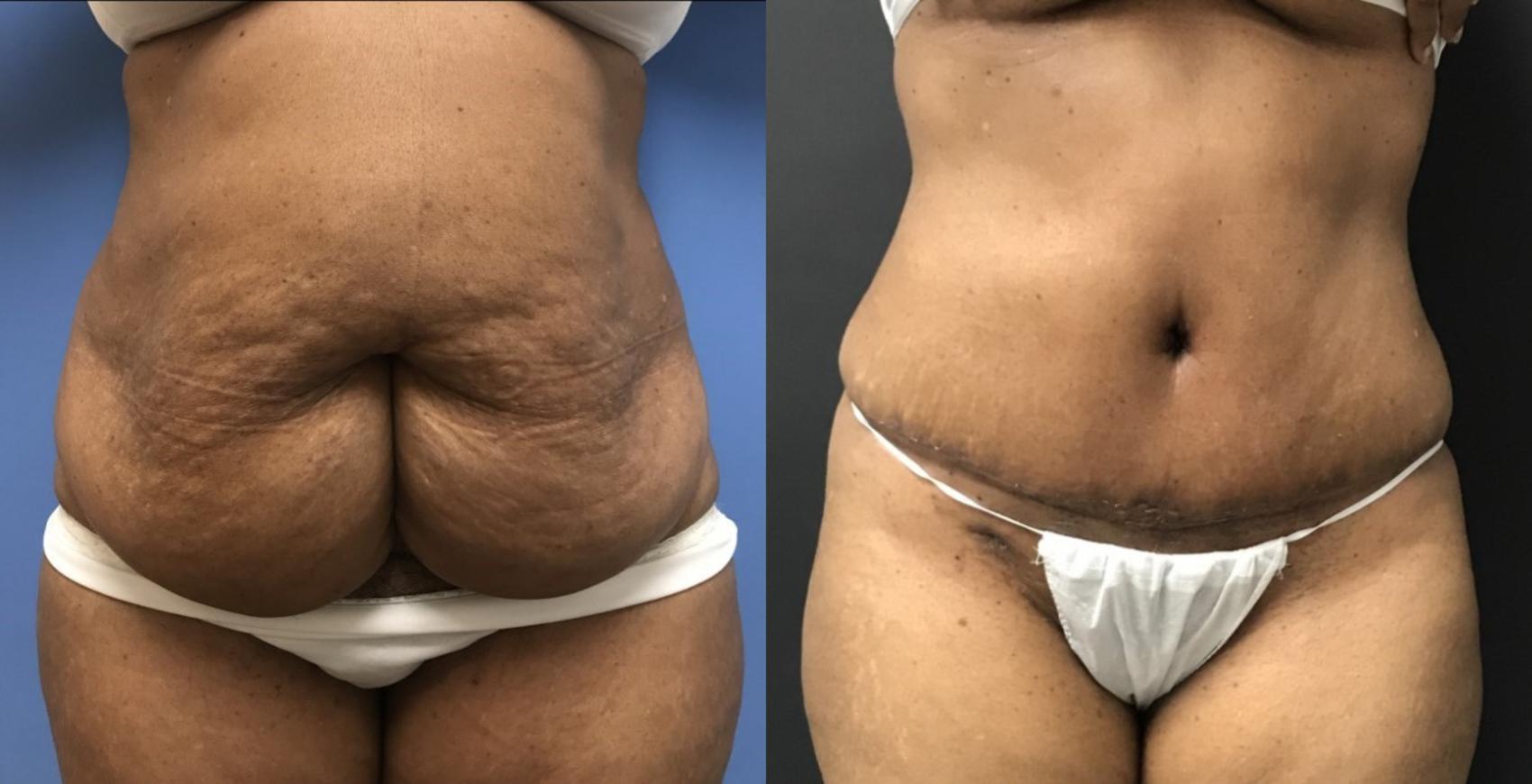If you’re dreaming of the smoother, flatter abdomen that a tummy tuck can create, you may also be wondering about the scar that will accompany it. Scarring is a natural consequence of surgery, and for most patients, the improved contours and increased confidence are worth it. Learn more about the tummy tuck scar healing stages and what to expect below.
What Do Tummy Tuck Scars Look Like?
A typical tummy tuck involves an incision low on the abdomen that runs between your hip bones and an inconspicuous one encircling your bellybutton. Your plastic surgeon will take care to ensure that the horizontal incision can be concealed by most underwear or swimwear bottoms. See for yourself in our tummy tuck before and after photos.
Tummy Tuck Scar Timeline
Initial Healing: Weeks 1 to 4
Immediately after a tummy tuck, patients can expect their incision lines to appear red, raised, and swollen. This is a natural part of the healing process as the body begins to repair the incisions made during surgery. Be sure to follow all of your postoperative and wound care instructions diligently.
Once your sutures are out and the skin is healed, you can start applying scar management products such as silicone gel sheets and creams to encourage healing and minimize the appearance of scars. Patients may also benefit from gentle, daily massage to prevent scar tissue build-up and keep the skin as soft and flexible as possible.
Other things you can do at this stage to improve your scar outcome include wearing your compression garment to reduce tension on the incision while it heals and protecting your incision from the sun.
The Transitioning Phase: Months 2 to 6
A tummy tuck scar after 6 months will look much better than it did after 6 weeks. During this secondary phase of healing, your tummy tuck scars are starting to fade and flatten. While they may still be visible, they’ll be lighter in color and blend in more with the surrounding skin.
Settling In: Months 7 to 12
By the one-year mark, most people have a healed tummy tuck scar. A tummy tuck scar after 1 year will have evolved from red to pink to a shade resembling the surrounding skin tone. In addition, it should be flat and smooth, although it may still be slightly visible. This milestone is a good time to undergo additional treatments if you want to further refine your scar.
Long-Term Maturation: Years 1 to 5+
Your tummy tuck scar has finished maturing and may only be visible upon close inspection. With healthy lifestyle habits such as a nutritious diet, exercise, and proper sun protection, patients can enjoy their slimmer physique (and their inconspicuous scar) for good!
Tummy Tuck Scar Tattoo & Other Revision Options
While most patients love their new look—tummy tuck scar included—some patients may seek other ways of minimizing or masking their scars’ appearance. They may consider options such as:
- Laser Therapy: A laser treatment such as the ICON fractional laser can improve the appearance of your tummy tuck scar with a non-invasive, evidence-based method.
- Tattoo: A tattoo can blend the wound in with the skin around it or be an artful and intentional way of drawing attention to the area.
- Scar Revision Surgery: In rare cases, patients may opt to undergo a secondary surgery to refine the appearance, texture, or sensation of the scar.
Choose Your Surgeon Wisely
While scar management therapies can help improve the appearance of tummy tuck scars, set yourself up for success by selecting a skilled and experienced board-certified plastic surgeon to perform your tummy tuck.
Choosing a qualified, credentialed surgeon leads to safer procedures and better cosmetic outcomes while minimizing the need for revision procedures later on. Learn more about what to look for in a plastic surgeon in our related blog post.
Start Your Tummy Tuck Transformation
If you are ready to take the next step in getting a contoured, sleek abdomen, please request a consultation or call our office at (650) 325-1118 to get started.





Leave a Reply